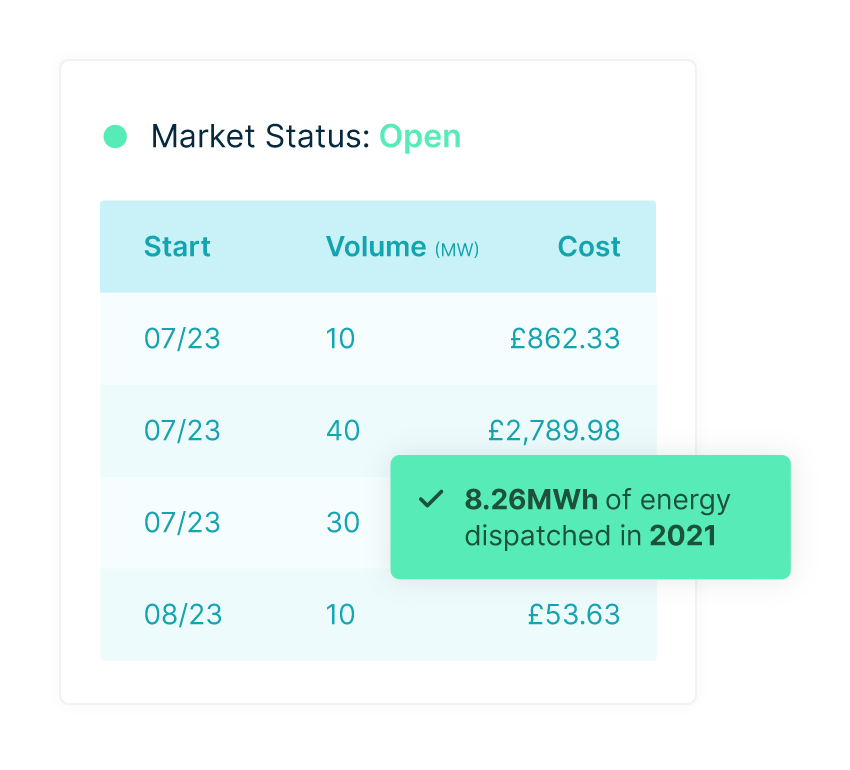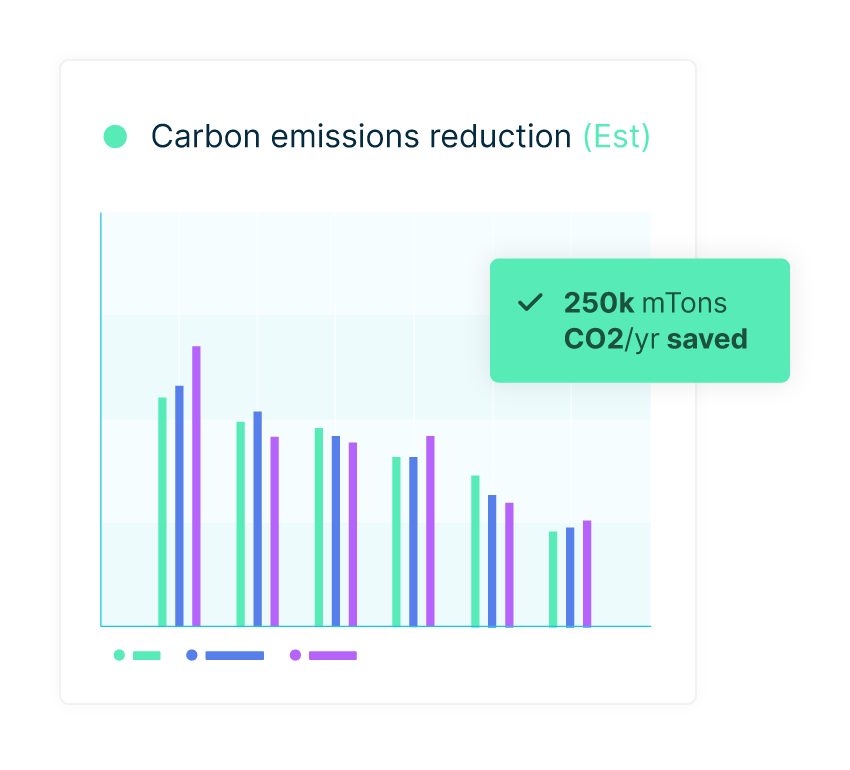A market for trading curtailment obligations
Electricity North West – Project BiTraDERProject BiTraDER is currently developing a day-ahead, many-to-many market which would enable Distributed Energy Resources (DERs) to trade their risk of curtailment. It will achieve this using real-time Active Network Management (ANM) data, by linking Electricity North West’s network management systems with Electron’s multi-market platform, ElectronConnect. The project aims to:
- Trial an asset-to-asset market for trading curtailment obligations on the distribution network
- Create an integrated architecture that supports an ecosystem of third-party market platforms and services

Local demand response and local consumption incentives
London Hydro – Project L2LThis deployment with London Hydro had three aims. First to ensure the visibility of Distributed Energy Resources (DERs) to the utility (LondonHydro). Second to allow the utility to access the benefits of locally connected DERs. The third was to incentivise the uptake of DERs within the utility’s consumer base.
Challenge
Engaging with locally connected Distributed Energy Resources (DERs) becomes an increasing challenge as more connect. The utility was looking to actively transition to a role of a Distribution System Operator and access DERs connected to their network.
Solution
To address these challenges, Electron designed and deployed a market in which two types of events occurred: demand response events in which London Hydro procured demand turn down service from its customers to ensure grid stability during periods of high demand; and community energy events in which local prosumers sold their excess solar energy to local customers.
Challenge
In this context, local prosumers were residential customers with rooftop solar and/or batteries. With the feed-in tariffs expiring, there was a need for new financial incentives to encourage rooftop solar uptake in the region.
Solution
Local prosumers with rooftop solar and/or batteries took part in community energy events where they could sell their excess solar energy to local customers. Trading was facilitated by London Hydro, local distribution company, with communication to customers via the Trickl app.
Challenge
Local consumers were residential demand customers operating electric vehicles (EVs) and smart homes (homes with smart appliances) in this context. Local consumers were interested in providing load shifting services to the grid and accessing local renewable energy from their community, but didn’t have an opportunity to do so.
Solution
Local consumers provided demand turn-down services in demand response events, as well as demand turn-up services in community energy (excess solar) events.

Project outcome
A total of five demand response events took place between April and August 2021, with 53 participants per event and a 52% average participation rate.
There were 12 community energy events in the summer of 2021, with 143 participants in total, and an average 40% participation rate. The project served to demonstrate the use of a market-based approach to improve demand response from aggregated flexible consumer-owned technologies and enable peer-to-peer trading to access community solar.

Local curtailment avoidance
Scottish & Southern Energy Network – Project TraDERThis deployment developed a flexibility marketplace that enabled efficient use of renewable energy in Orkney, Scotland. Led by Electron, the local real-time market allowed curtailed wind generators to trade with local flexible demand assets during windy periods. This enabled the generators to avoid curtailment, and the local demand assets to get paid to use clean energy.
Challenge
Annually, renewable electricity generation in Orkney is over 100% of electricity demand. During windy periods of the year, there was insufficient local demand for energy generation. This often resulted in high levels of curtailment as the Distribution Network Operator (DNO) was unable to export excess wind energy due to grid congestions.
Solution
Electron designed and deployed a market that allowed curtailed wind farms to pay local demand assets for the demand turn up (DTU) service during periods of excess wind generation. The result was that local consumers got paid for using renewable energy and curtailed wind farms could avoid curtailment. The DNO provided curtailment signals to facilitate trading in this market.
Challenge
For newer wind farms, with flexible connections, curtailment was typically reaching 40-60% of generation capacity. The result was significant lost revenue and delays connecting assets in a region where there are favourable conditions for wind farms.
Solution
The market enabled curtailed wind farms to buy demand turn up services from local consumers. This helped wind farms to benefit from curtailment avoidance during periods of high output.
Challenge
The aggregator represented local consumers operating electric storage heaters. Local consumers were interested in providing demand turn up service and accessing local renewable energy, but didn’t have an opportunity to do so.
Solution
The aggregator enabled local consumers with controllable loads to get paid for using renewable energy when it was abundant.

Project outcome
Project TraDER showcased the benefits of local flexibility marketplaces. Flexible demand assets benefited by getting paid to use renewable energy when it was abundant. Wind farms benefited from the opportunity to avoid curtailment during periods of high output.
The overall outcome was that the use of clean energy was optimised in both time and place. The project ran from February 2020 to June 2021. The first trades were conducted on the 28th of March 2020. Over the following year, over 23,660 trades were completed, with 8.26MWh of energy dispatched.

Local demand response
Silicon Valley Clean Energy – Project ResponDERElectron and Sillicon Valley Clean Energy (SVCE) collaborated through the Innovation Onramp program to design a new market to incentivise grid resiliency. A new local flexibility market was designed where SCVE can produce clean energy services from its customers.
Challenge
SVCE was procuring an increasing volume of wind and solar generation for its portfolio, often resulting in imbalance during late morning and early evening. At these times of high demand and low generation, SVCE was exposed to the wholesale market, which has cost and carbon implications.
Solution
A market was designed to access three value streams: minimisation of wholesale market exposure via load shifting and shedding; minimisation of Resource Adequacy (RA) payments through load shedding; and finally, the reduction of hourly emissions using load shedding. SVCE became the buyer of load shifting and shedding services.
Challenge
This proved more of an opportunity for the aggregator, rather than a problem. The VPP’s needed access to the system to be able to support with operational balancing of the high voltage network and provision of capacity.
Solution
The flexibility marketplace design enabled multiple aggregators operating multiple device types to enrol and participate in each market event. This market operated as a continuous market based on forecasted day-ahead energy prices, closing before the CAISO day-ahead energy market. The aggregators – or Virtual Power Plants (VPPs) – participated in the market on behalf of DER owners and SVCE customers, as the sellers.

Project outcome
The market designed provided a first demonstration of utilising a pay-for-performance variable price to incentivise load reduction within an LSE’s territory.
The market allowed SVCE to engage multiple flexible technologies, via aggregators, to request demand response based on three value streams: minimisation of wholesale market exposure (estimated at $17m 10yr NPV); reduction in Resource Adequacy payments (estimated at $20M 10-yr NPV); and reduction of hourly carbon emissions (estimated at 250k mTons CO2/yr saved).

ElectronConnect
Configurable flexibility marketsWhether you’re buying flexibility or providing grid services, use a marketplace that suits your needs. Let’s accelerate the transition to Net Zero energy together. Read more about the four main market types.
Working together
For a better futureWhether you’re buying flexibility or providing grid services, use a marketplace that suits your needs.
Let’s accelerate the transition to Net Zero energy together.


